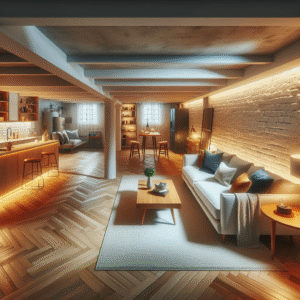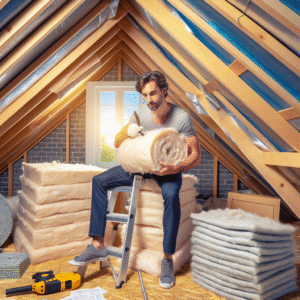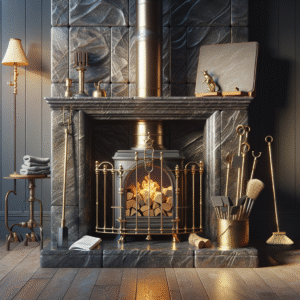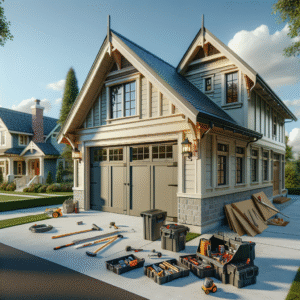If you’re in the market for durable, low-maintenance siding options for your home, stucco might just be the perfect fit. Stucco siding, known for its versatile finishes and insulative properties, offers a blend of durability and aesthetic appeal that suits various architectural styles. Whether you’re renovating an old house or building a new one, understanding the types and benefits of stucco siding can help you make an informed decision. This guide aims to dive deep into the world of stucco, providing you with essential maintenance tips and solutions to common issues, ensuring your home’s exterior remains in pristine condition.
1. Understanding Stucco Siding: Types and Benefits for Home Exteriors
Stucco has been a popular choice in home construction for centuries due to its adaptability and resilience. It’s composed of cement, lime, and silica which creates a hard, dense coating when applied to walls. There are primarily two types of stucco siding available:
- Traditional Stucco: Also known as hard coat stucco, is a time-tested method that involves multiple layers over a wood or metal lath.
- Synthetic Stucco: Known in the industry as Exterior Insulation and Finish Systems (EIFS), this option includes layers of foam insulation board, mesh, a base coat, and a finish coat.
Both types offer significant benefits such as high energy efficiency, sound dampening qualities, and a 50-80 year lifespan when properly maintained. They also provide limitless possibilities for textures and colors, enabling homeowners to customize their exteriors precisely to their liking.
2. Essential Maintenance Tips for Stucco Siding: A Step-by-Step Guide
Maintaining stucco siding is crucial to preserving its durability and aesthetic value. Regular checks and minor repairs can prevent major issues down the line. This section will cover basic maintenance routines to help keep your stucco siding in top shape.
3. Common Stucco Issues and How to Address Them: Expert Advice for Homeowners
Even with its durability, stucco can develop problems such as cracking, staining, or even moisture penetration. Understanding how to identify and address these issues early can save homeowners time and money. This segment will provide practical advice from industry experts on tackling common stucco challenges.

If you’re ready to take your home improvement or construction project to the next level, we can help! Find trusted contractors on BuildNet, whether you’re looking for renovations, new builds, electrical work, plumbing, or anything in between. Our directory connects you with qualified professionals who can make your vision a reality.
Understanding Stucco Siding: Types and Benefits for Home Exteriors
Hey there! If you’re considering a fresh look for your home’s exterior, stucco siding might just be the transformation you’re looking for. Known for its durability and aesthetic versatility, stucco has been a favored choice among homeowners for decades. Let’s dive into the different types of stucco siding and explore the amazing benefits it can bring to your home.
What is Stucco Siding?
Stucco is a popular type of plaster exterior that consists of cement, lime, and silica applied in several layers over a wood or metal lath. Once dried, it forms a hard, dense solid that is perfect for the exterior cladding of homes. Stucco siding is not just about protection; it’s about giving your home a unique character and curb appeal that stands out in the neighborhood.
Types of Stucco Siding
Understanding the different types of stucco and their applications can help you make an informed decision on what’s best for your home. Here are the most common types:
Traditional Hard Coat Stucco
This is the classic stucco that people have been using for years. It’s a time-tested, durable option that offers robust protection against various weather conditions. Hard coat stucco is applied in three coats, making it particularly resistant to cracks and impacts.
Synthetic Stucco (EIFS)
Exterior Insulation and Finish Systems (EIFS) are a lightweight synthetic option that offers better insulation than traditional stucco. Unlike hard coat stucco, EIFS uses a foam insulation board secured to the walls, covered by a base coat, and then finished with a textured coat.
One-Coat Stucco
This is a newer, faster-to-install type of stucco that combines the scratch and brown coat into one. Although expedient in application, it still offers the strength and durability similar to the traditional three-coat system.
Benefits of Stucco Siding
Not only does stucco look great, but it also boasts a plethora of benefits for your home. Let’s unpack these advantages:
Lasting Durability
Stucco is known for its incredible durability and longevity. It’s resistant to fire, rot, and pests, making it an ideal choice for almost any climate. Properly maintained, stucco can beautify and protect your home for decades.
Energy Efficiency
Thanks to its excellent insulative properties, stucco siding helps keep your home cooler in the summer and warmer in the winter. This can lead to significant savings on your heating and cooling bills, making stucco a smart choice for energy-conscious homeowners.
Low Maintenance
Once installed, stucco siding requires minimal maintenance. It doesn’t need to be painted frequently, and repairs are usually straightforward if they’re needed at all. A simple periodic cleaning is often enough to keep your stucco looking fresh.
Sound Reduction
Stucco’s dense composition helps reduce sound transmission. Living in a stucco home can mean fewer disturbances from outside noise, which is a great bonus if you live near busy streets or in lively neighborhoods.
Customizable Aesthetics
One of stucco’s greatest attributes is its versatility in aesthetics. Whether you prefer a smooth finish, a rough texture, or something in between, stucco can be customized in a variety of textures and colors to match your unique style and complement your home’s architecture.
Choosing the Right Stucco for Your Home
Choosing the right type of stucco siding depends on various factors, including your climate, your home’s construction, and your aesthetic preferences. It’s essential to consult with a professional to understand what would work best for your specific situation.
For those living in areas with extreme weather conditions, traditional hard coat stucco might be the best option due to its robustness. If insulation is a priority, EIFS could provide an efficient solution while still offering the classic stucco look. And if you’re looking for a quick upgrade without compromising on quality, one-coat stucco could be the way to go.
Regardless of the choice, stucco siding is a fantastic way to enhance your home’s exterior, boost its curb appeal, and increase its value. With its blend of beauty, durability, and versatility, stucco can cater to a wide range of tastes and requirements, making it a top choice for homeowners around the world.

Essential Maintenance Tips for Stucco Siding: A Step-by-Step Guide
Hey there, homeowner! Is your charming home adorned with stucco siding? Great choice! Stucco not only adds a touch of classic elegance but also holds up well against the elements. However, like any hero, it requires a bit of care to maintain its prowess. Whether you’re in sunny California or chilly Maine, proper upkeep is key to keeping your stucco in tip-top shape. Let’s dive into some essential maintenance tips that will keep your home’s exterior looking its best!
Regular Cleaning
First off, stucco loves to stay clean. Dirt and debris can make your home look less appealing and can also wear down the material over time.
- Soft Washing: Once or twice a year, give your stucco a gentle wash. Use a soft-bristled brush and a mixture of warm water and mild detergent. Gently scrub the surface to remove dirt.
- Avoid Power Washing: It might be tempting to blast away dirt with a power washer, but high pressure can damage stucco. It’s best to stick with less forceful methods.
- Rinse Thoroughly: After scrubbing, make sure to rinse the area well with plain water to remove any soap residue.
Inspecting for Cracks and Damage
Cracks in stucco can be more than just an eyesore; they can lead to serious problems like water intrusion. Regular inspections are crucial.
- Visual Inspection: Walk around your home periodically and examine the stucco for any signs of cracks or damage. Pay special attention to areas around windows and doors.
- Seal Small Cracks: For minor cracks, use a high-quality, paintable caulk to seal them up. Make sure the caulk is flexible enough to accommodate any further movement.
- Professional Help: If you notice larger cracks or sections of the stucco bulging, it’s wise to call in a professional. Larger repairs can be complex and require expert attention.
Dealing with Water Issues
Stucco needs to breathe, and trapped moisture is its worst enemy. Ensuring proper water drainage is essential.
- Check Gutters and Downspouts: Make sure all gutters and downspouts are clear of debris and directing water away from your home’s foundation and walls.
- Landscaping: Keep plants and soil at least a few inches away from stucco surfaces to prevent moisture from wicking up into the stucco.
- Proper Sealing: Ensure that all windows, doors, and other openings are properly sealed to prevent water from seeping behind the stucco.
Touching Up Paint
Stucco can also fade over time, especially if it’s a darker color or exposed to intense sun. A fresh coat of paint not only makes your home look fresh but also adds an extra layer of protection.
- Choose the Right Paint: Use a breathable masonry paint that’s designed for stucco. This will allow moisture to escape and prevent issues like bubbling or peeling.
- Apply Correctly: Follow the manufacturer’s instructions for application, usually involving a thorough cleaning of the surface, followed by one or two coats of paint.
Mold and Mildew Prevention
In damp climates, mold and mildew can be a problem for stucco exteriors. Keeping these fungi at bay is important for both the health of your home and your family.
- Ventilation: Ensure your home is well-ventilated, especially in areas like the attic and bathrooms, to reduce humidity levels.
- Mold-resistant Products: Consider using mold inhibitors in your paint or applying mold-resistant sealants where necessary.
- Regular Inspections: Keep an eye out for any signs of mold or mildew and address them promptly. The faster you act, the easier it is to manage.
Yearly Professional Inspections
Finally, while DIY inspections are great, having a professional look at your stucco can help catch issues you might miss. A stucco specialist can offer insights and suggest preventative measures that could save you money and headaches down the line.
- Book Annual Check-ups: Set a reminder to book a professional inspection once a year. It’s a small investment that pays off in extending the life of your stucco.
- Follow Recommendations: Be sure to act on professional advice promptly to keep your stucco in the best condition possible.
Maintaining your stucco siding doesn’t have to be a chore. With these straightforward tips, you can keep your home looking beautiful and ensure your stucco lasts for years. Remember, a little maintenance goes a long way in protecting your investment and keeping your sanctuary stunning!
Common Stucco Issues and How to Address Them: Expert Advice for Homeowners
Hey there! If you’re on this page, chances are you’ve noticed something off with your stucco siding and are looking for some fixes. Don’t worry, you’re not alone. Stucco, while incredibly durable and aesthetically pleasing, can develop a few problems over time. Let’s dive into some common stucco issues and explore expert-recommended solutions to keep your home looking its best.
Cracking
One of the most common issues with stucco is cracking. These cracks can range from hairline to larger, more noticeable fissures. Before you panic, let’s understand the types of cracks and their fixes:
- Hairline Cracks: These are thin surface cracks that often result from minor settling or vibrations. Typically, they’re not a sign of deeper structural issues. A good quality acrylic caulk can be used to fill these cracks, followed by a touch-up with stucco paint to blend it in.
- Larger Cracks: Cracks wider than 1/8 inch can be more concerning and might require more substantial repairs. These cracks often need a stucco patching compound. After widening the crack slightly to remove loose debris, apply the compound with a putty knife, and smooth it out to match the surrounding area.
Staining
Stucco can also become stained over time due to weathering, dirt accumulation, or even mold and mildew. Here’s how to tackle those unsightly stains:
- Cleaning: Start with a gentle pressure wash using a low to medium setting to avoid damaging the stucco. For more stubborn stains, you might need to apply a mild bleach solution (one part bleach to ten parts water) and gently scrub with a soft brush.
- Preventative Measures: To prevent future staining, consider applying a silicone-based water repellent after the stucco is clean and fully dry.
Efflorescence
Noticed some white, powdery deposits on your stucco? That’s efflorescence, caused by water seeping through and dissolving natural salts inside the stucco, which then leach to the surface when the water evaporates. Here’s how to handle it:
- Cleaning: You can often brush off efflorescence with a stiff brush. For persistent issues, wash the area with a vinegar solution to help dissolve the salts.
- Addressing Water Intrusion: Since efflorescence is caused by moisture, make sure to check and repair any sources of water leakage or improper drainage around the affected area.
Bulging or Delamination
Sometimes, areas of stucco can pull away from the substrate, creating a bulging effect. This issue, known as delamination, is typically caused by water intrusion or improper installation. Here’s what you can do:
- Inspection: Tap lightly on the bulging area. A hollow sound usually indicates delamination. You’ll need to remove the damaged stucco to inspect the lath (the underlying support) for rust or damage.
- Repair: After any necessary lath repairs, apply a new layer of stucco following proper guidelines. This might be a good time to consult a professional to ensure the new stucco adheres correctly and matches the existing texture and color of your home’s exterior.
Mold and Mildew
Mold and mildew can develop on stucco due to excess moisture and lack of sunlight, particularly on north-facing walls or shaded areas. Here are tips to address this:
- Cleaning: Use a solution of one part bleach to ten parts water to clean the affected area. Always wear protective gloves and eyewear when handling bleach.
- Increasing Sunlight Exposure: Trim any overhanging branches or shrubs to increase sunlight and improve air circulation around the affected areas.
- Waterproofing: After cleaning and thoroughly drying the area, consider applying a waterproof sealant to help prevent future mold and mildew growth.
Dealing with stucco issues can seem daunting, but most problems are fixable with a little know-how and elbow grease. If you ever feel out of your depth, remember that local professionals are just a call or click away through platforms like BuildNet. They can provide the expertise and solutions to keep your stucco siding looking great for years to come!
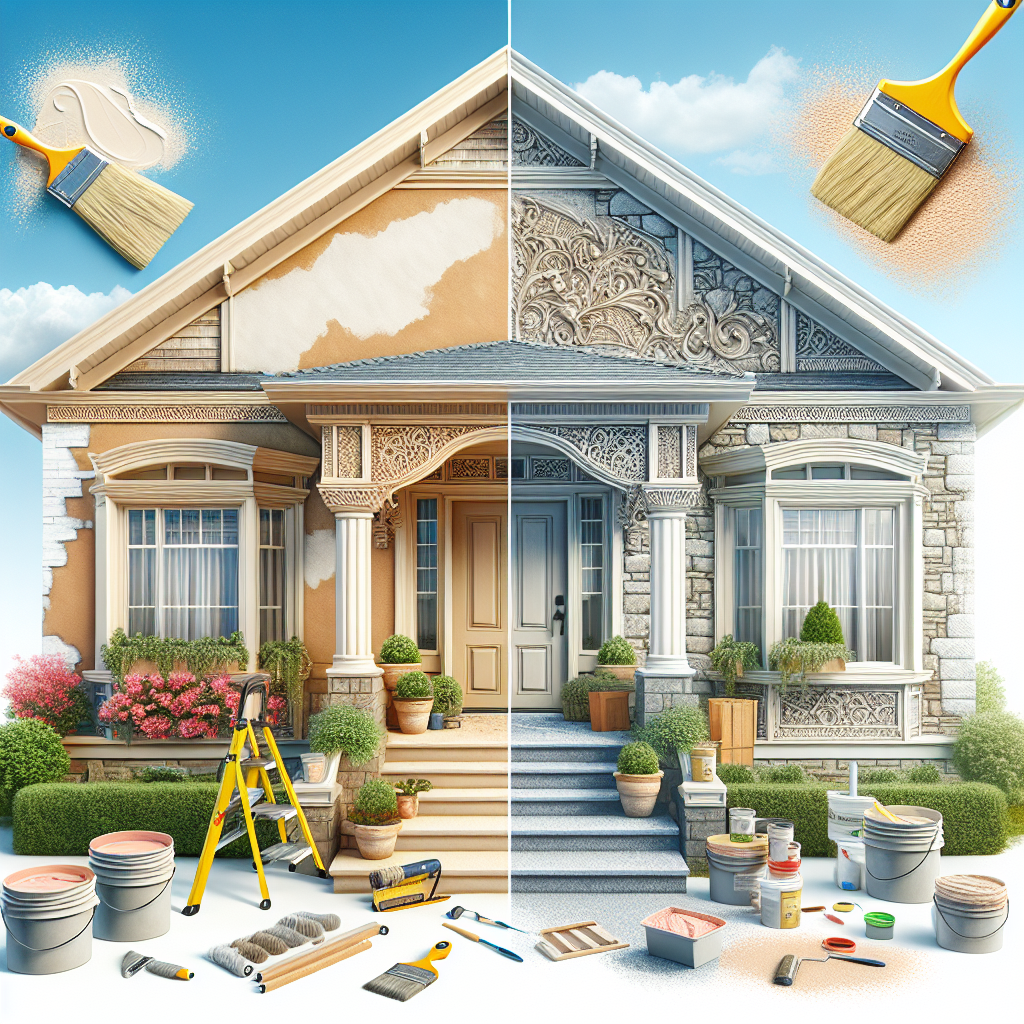
What is Stucco Siding and What Are Its Types?
Stucco siding is a popular exterior finish that’s been used in architecture for centuries. It’s made from a mixture of cement, lime, sand, and water, applied in several layers over a wood or metal lath. There are mainly two types of stucco siding available:
- Traditional Stucco: Also known as hard coat stucco, it is durable and hard-wearing, suitable for many climates.
- Synthetic Stucco: Known as Exterior Insulation and Finish System (EIFS), this variant is lighter and has better insulation properties.
What Are the Benefits of Installing Stucco Siding on My Home?
Stucco siding is not just aesthetically pleasing but also offers several benefits:
- Durability: It is resistant to fire, rot, and pests, making it last for decades.
- Energy Efficiency: Stucco provides an additional layer of insulation to your home, helping to reduce heating and cooling costs.
- Low Maintenance: It requires less maintenance compared to other siding materials like wood.
- Customizable: It can be finished in various textures and colors to match your home’s aesthetic.
How Should I Maintain My Stucco Siding?
Maintaining stucco siding is crucial for its longevity and aesthetic appeal. Here’s a simple guide:
- Regular Cleaning: Use a garden hose to clean off dirt and debris. For stubborn stains, use a mild detergent solution and a soft-bristled brush.
- Crack Inspection: Regularly inspect for cracks. Small cracks can be sealed with elastomeric sealant, while larger ones might need professional attention.
- Prevent Water Damage: Ensure that gutters and downspouts are clear and functioning to avoid water pooling around the foundation.
What Are Common Problems With Stucco Siding and How Can I Fix Them?
Despite its durability, stucco can face some issues, especially if not properly maintained. Here are some common problems:
- Cracking: Hairline cracks are normal but should be sealed promptly to prevent water ingress.
- Staining: This can be caused by water seeping through and can be cleaned with specialized cleaning agents.
- Impact Damage: High impact can cause dents or holes. These areas may need to be patched by a professional.
When Should I Consider Professional Help for Stucco Installation or Repair?
While minor repairs can be a DIY project, major repair work or new installations should always be handled by professionals. Consider seeking expert help if:
- Large Cracks or Damages: These might indicate structural issues that require professional assessment and repair.
- Extensive Staining: This could suggest internal problems, such as moisture issues, that need expert solutions.
- Installation: Professional application ensures correct techniques are used, which is crucial for stucco’s durability.
Why Should I Choose a Contractor From BuildNet for My Stucco Needs?
Choosing a contractor from BuildNet ensures that you’re working with skilled professionals who are:
- Experienced: They have the necessary experience to handle both installation and repairs effectively.
- Verified: BuildNet verifies all contractors to ensure they meet high standards of quality and reliability.
- Local Experts: Local contractors understand the climate-specific needs and building codes of your area.
Conclusion
Whether you’re considering new stucco siding or need repairs on your existing one, understanding the basics, proper maintenance, and common issues can significantly help in preserving the life and beauty of your home exterior. Remember, while DIY can be tempting, professional contractors bring an element of expertise and reliability that guarantees long-lasting results. Don’t hesitate to reach out to a contractor on the BuildNet website for a free quote. Their local knowledge and professional experience can be invaluable, especially for specialized tasks like stucco installation and repair. Keep your home looking great and well-protected year-round with the right care and expert help!

